Graceland Cemetery: Part 2
Last week's visit to Chicago's Graceland Cemetery yielded so many photos, I needed a second post to showcase all the interesting monuments we saw there!
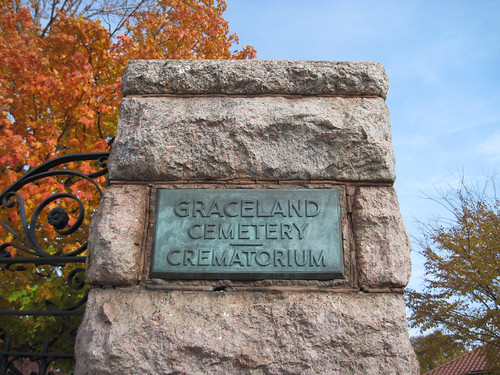
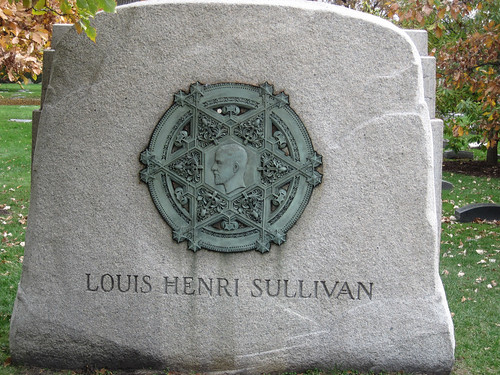
The famous architectural firm of Burnham & Root helped shape the buildings of Chicago in the 1880's through the 1890's. The team led the construction of the World's Columbian Exposition of 1893. Root died before construction had begun, and Burnham went on to complete the Fair, and had much future success. Both are buried here at Graceland. John Wellborn Root with his Celtic cross, and Daniel Hudson Burnham with his family buried on a private island, accessible by foot bridge, and plots marked with natural looking rocks.
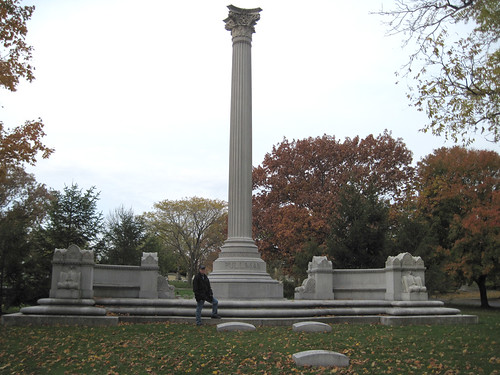
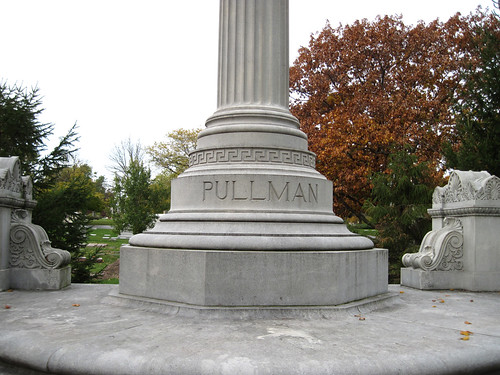
Then there was Allan Pinkerton, the founder of the famous detective agency. Pinkerton and his men foiled an assassination plot against Abraham Lincoln on his route to his inauguration, and he formed the forerunner of the Secret Service.
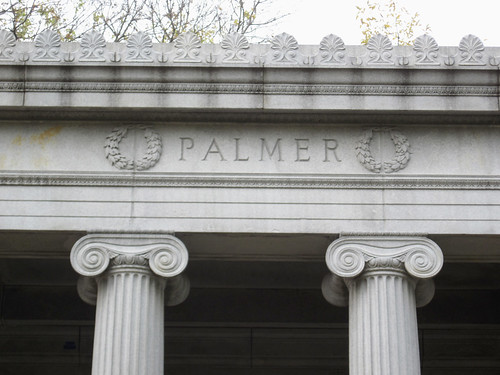

This week, I'll focus on the more famous people buried at Graceland. During the late Victorian era, Chicago was experiencing an architectural renaissance. Many famous architects made a name for themselves here, and a good many of them are buried in Graceland. Last year I did a post on one of my favorites, Louis Sullivan (read that post here). In Sullivan's later years, he was reduced to designing whatever would bring in a bit of money, because his grand style skyscrapers were no longer in vogue. Some of his designs included mausoleums, such as this one he designed for lumber baron Martin Ryerson.
When Ryerson's partner, Henry Harrison Getty, saw Ryerson's tomb, he had Sullivan create one for his wife Carrie in 1890.
The Getty Tomb is now a designated Chicago Landmark. Louis Sullivan himself is buried at Graceland. Dying a pauper, his funeral was funded by his friend Frank Lloyd Wright. Only years later was this monument erected at his grave.

The famous architectural firm of Burnham & Root helped shape the buildings of Chicago in the 1880's through the 1890's. The team led the construction of the World's Columbian Exposition of 1893. Root died before construction had begun, and Burnham went on to complete the Fair, and had much future success. Both are buried here at Graceland. John Wellborn Root with his Celtic cross, and Daniel Hudson Burnham with his family buried on a private island, accessible by foot bridge, and plots marked with natural looking rocks.
Many other famous architects are buried here, including William LeBaron Jenney (designed the first "skyscraper" with a full metal frame);
Ludwig Mies van der Rohe (pioneer of Modern architecture, "Less is More");
and Bruce Goff (early student of Frank Lloyd Wright, designed a lot of buildings in Oklahoma).
Some nationally famous people are also buried in Graceland. Cyrus McCormick (founder of what became International Harvester, perfected the reaper);
and a couple famous "bosses" on opposite ends of the spectrum. George Pullman is known for inventing the railroad sleeping car, and created an entire city-within-a-city for his employees in south Chicago. But he ruled with an iron fist. His workers famously went on strike in 1894. He was widely hated, and when he died in 1897, was buried in the cover of night, within a heavy lead-lined coffin and beneath tons of cement. They were worried labor activists would try to remove the body.


Then there was Allan Pinkerton, the founder of the famous detective agency. Pinkerton and his men foiled an assassination plot against Abraham Lincoln on his route to his inauguration, and he formed the forerunner of the Secret Service.
Pinkerton's plot contains his family, and several devoted employees!
Then there are powerful movers and shakers of Chicago. Joseph Medill was the 26th mayor of Chicago, owner of the Chicago Tribune, and co-founder of the Republican Party.
Victor Lawson owned the Chicago Daily News. Sculptor Lorado Taft (who also designed "Eternal Silence" for Dexter Graves' gravesite at Graceland) designed the monument "Crusader" for him.
Carter H. Harrison, the 29th mayor of Chicago, was assassinated at his home only two days before the closing ceremonies at the Columbian Exposition in 1893. Upon our arrival at his memorial, a tour group led by the Chicago Architecture Foundation was learning about his fate.
There are many people whose names are now only known to most Chicagoans because of the streets that were named after them. For instance, General Alexander C. McClurg's Celtic cross was designed by Louis Comfort Tiffany. He was a Civil War soldier, and publisher of Tarzan of the Apes.
Charles H. Wacker was director of the Columbian Exposition, and later Chairman of the Chicago Plan Commission.
John Jacob Glessner was vice president of International Harvester. His home is now a museum on Chicago's Prairie Avenue.
John Kinzie was one of Chicago's first European settlers. His remains have been moved twice, once from the original Fort Dearborn Cemetery to Lincoln Park in 1835, then to Graceland in the 1870's.
Finally there are the merchant tycoons whose presence is still felt in Chicago. Potter Palmer and his wife Bertha were the upper eschelon of Chicago society. Palmer developed State Street, was a dry goods merchant, and real estate tycoon. His famous Palmer House Hotel burnt to the ground in the Great Chicago Fire of 1871. Palmer borrowed 1.7 million to rebuild it. You can still stay at the Palmer House today. His wife Bertha was a socialite and art collector. Her collection of French impressionist paintings was unrivaled, and is still on display at the Art Institute of Chicago.

Potter Palmer's dry goods business was bought out by one of his partners, Marshall Field. He made the department store what it is today, and coined the term, "Give the lady what she wants." The Field Museum of Natural History is named after him after he endowed a million dollars. He also co-founded the University of Chicago with John D. Rockefeller. Until 2006, Chicagoans could still shop at the famous Marshall Field's store on State Street.
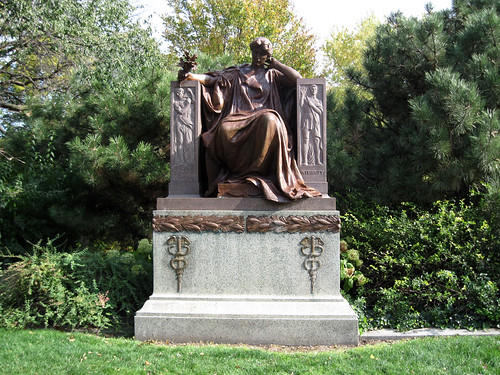
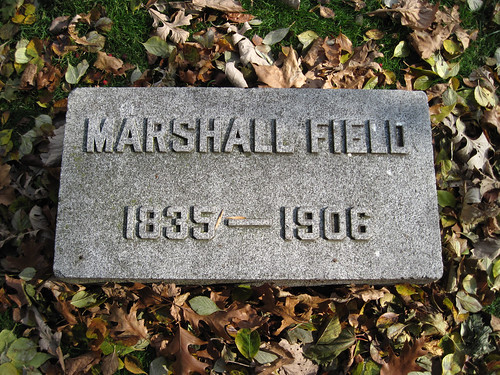
Sadly, after many mergers and acquisitions, Macy's took over Marshall Field's and changed it's name. Being a true-blue Chicagoan, I still refuse to ever step inside a Macy's store!

Read more about the lives of these famous Chicagoans buried at Graceland:
Labels: Architecture, Chicago
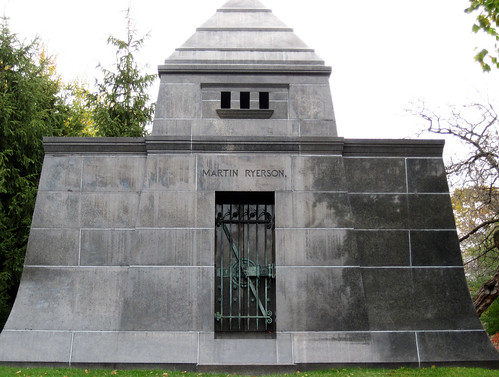
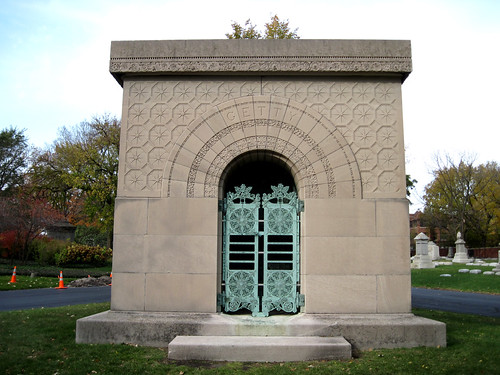
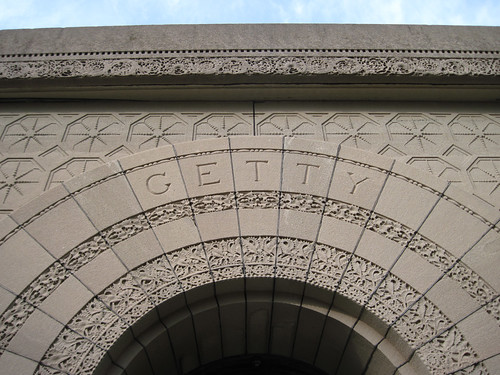
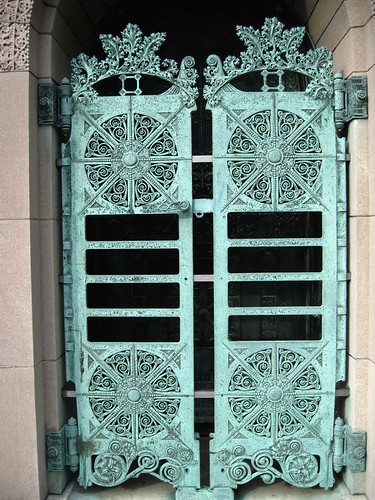

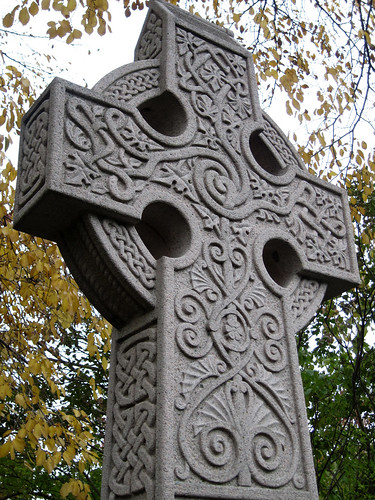
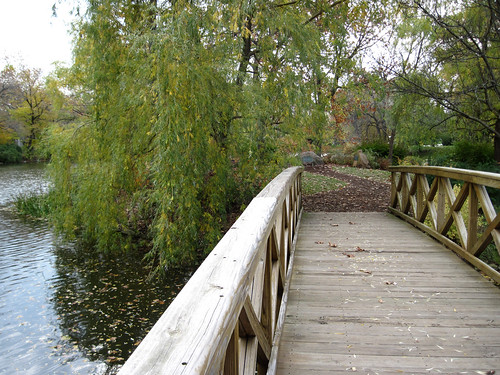

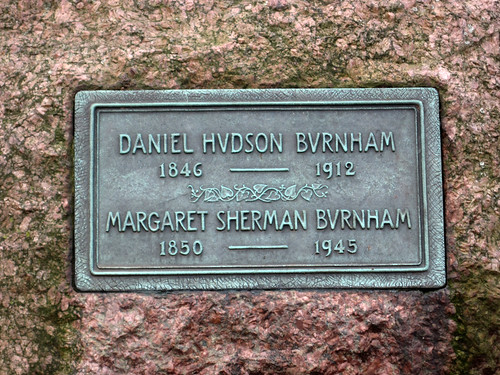
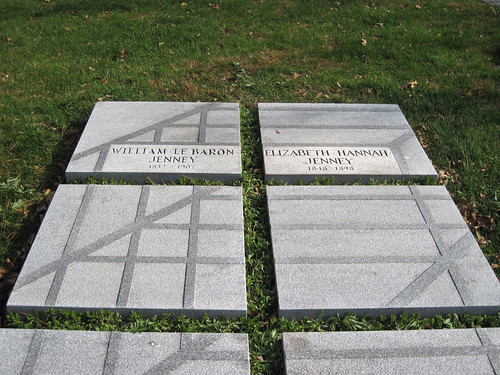
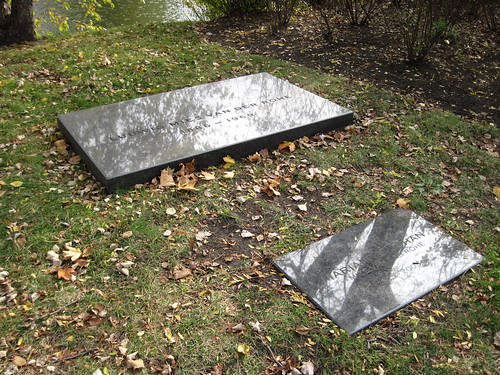

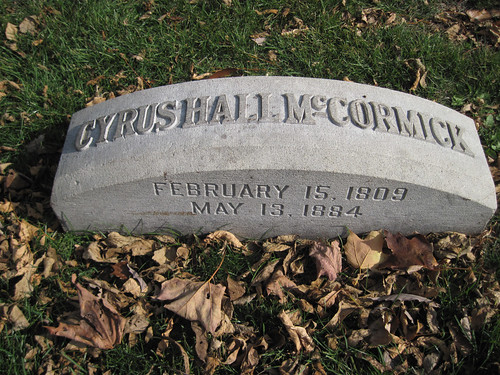
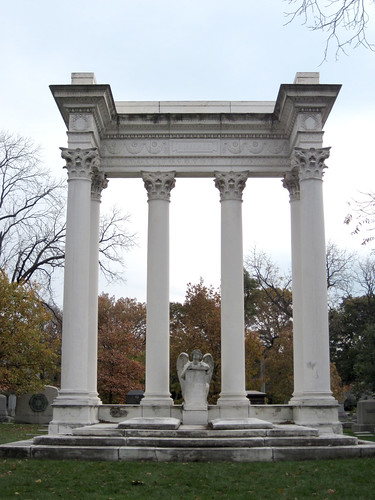
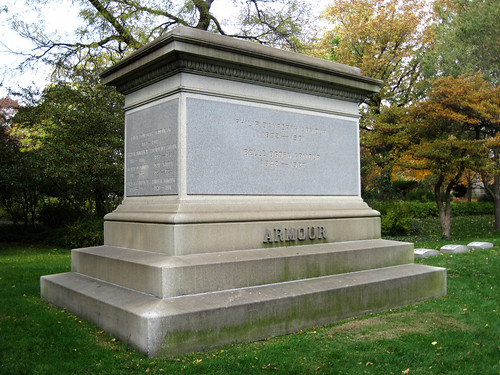

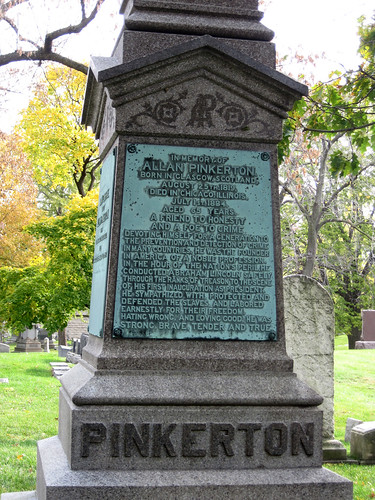

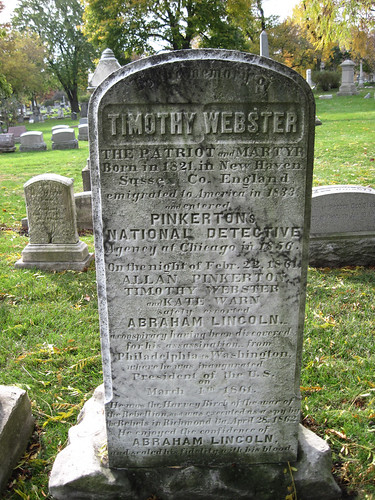
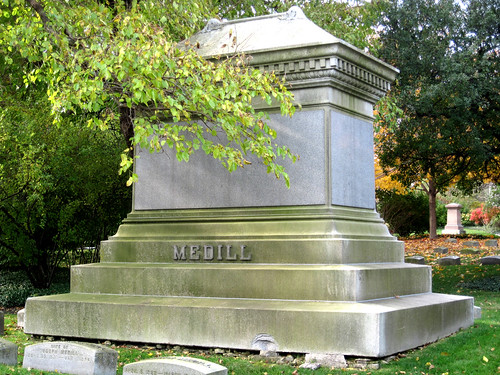
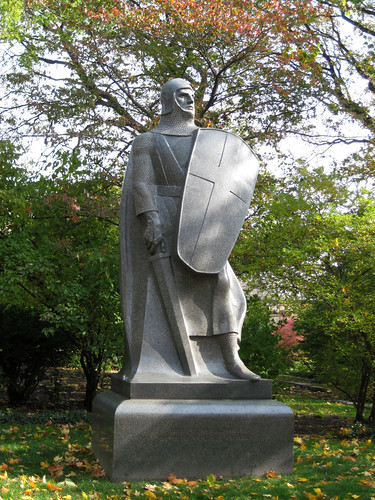
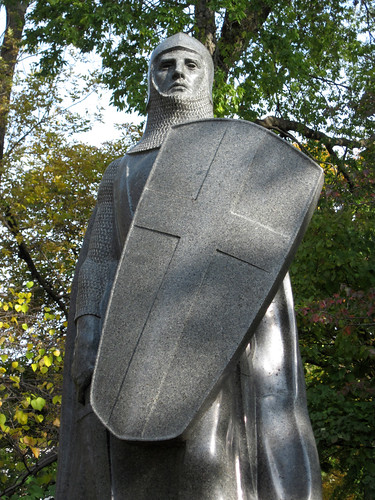
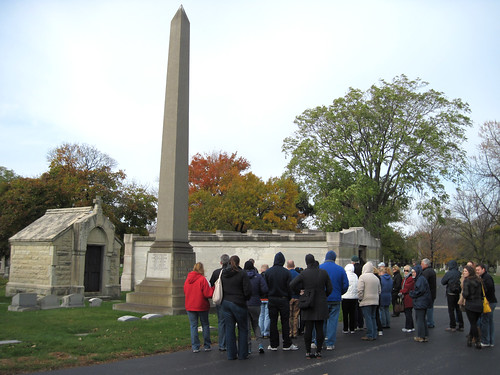

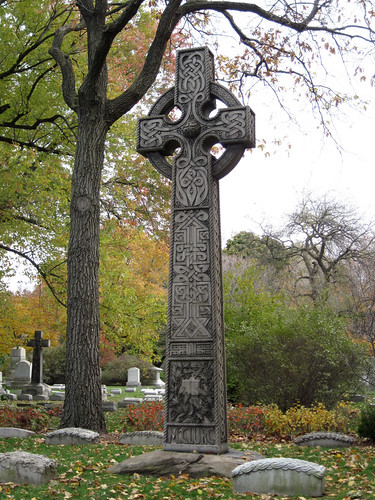
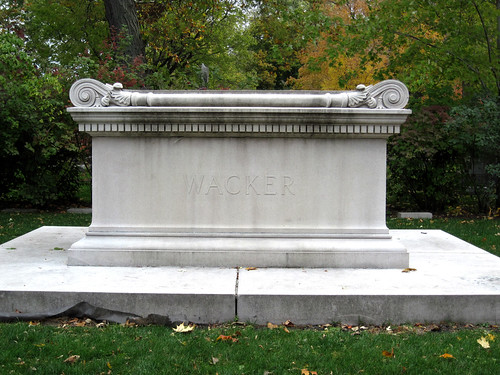
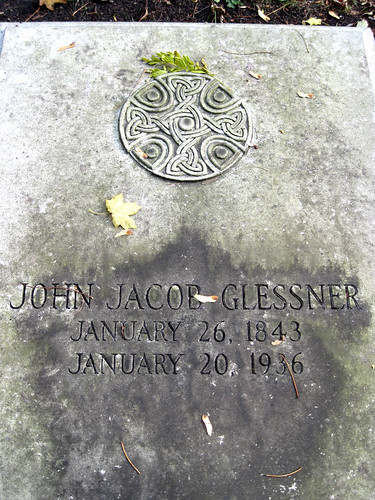
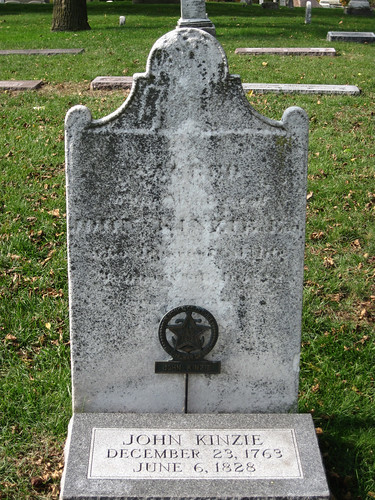
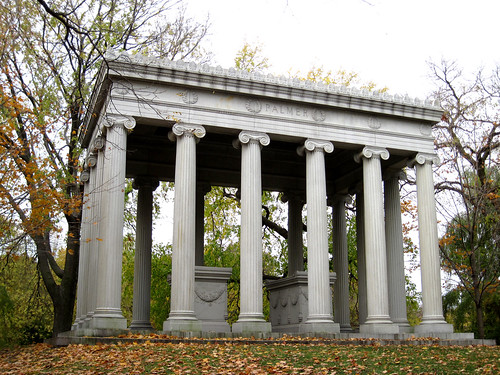


8 Comments:
Liked the Pinkerton stone - very interesting. The knight is very impressive!
Liz @ Shortbread & Ginger
Hi Liz-
Yes, Pinkerton, the famed Scottish detective, must have had an interesting life. And it's quite unusual to see a knight at a cemetery in the U.S., that's for sure!
-Pam
What a beautiful place! I especially like all the celtic inspired pieces.
Hi Ashley-
I agree with you, I love Celtic crosses and ornamentation. They're so beautiful!
-Pam
I'm amazed at the size of some of those monuments. We had a Marshall Field's in Columbus for a short while. Macy's bought that plus a local department store chain, so we're overrun with Macy's now.
Hi Pam-
Yeah, these monuments were huge... nothing like people get these days! I never knew Marshall Fields were anywhere outside the Chicago area. I don't like when big conglomerates take over and change local traditions. :-)
-Pam
So impressive, and beautiful! I looked over both of your posts. It makes me want to go cemetary hopping! These monuments all do make one mindful, don't you think? Well done!
Hi Jacqueline-
Thank you for visiting! I'm glad you liked my posts. I don't know how I happened upon your blog, but I'm sure glad I did! Beautiful! :-)
-Pam
Post a Comment
Subscribe to Post Comments [Atom]
<< Home